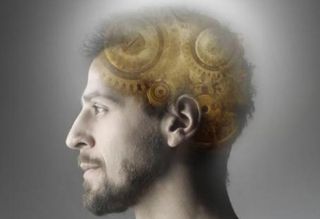Hypersex to Hoarding: 7 New Psychological Disorders
Intro

The fifth and newest revision of the psychology handbook the Diagnostic and Statistical Manual of Mental Disorders, or DSM-5, is filled with conditions you've probably heard of before, such as anxiety and amnesia, but a few conditions that might be added in the new edition may be less commonly understood.
Experts are now reviewing the new version of the book, due to be published in May 2013, and determining which new diagnoses to include.
To make the cut, a condition should have a unique set of symptoms and a verifiable medical cause, said Dr. Theodore Stern, director of psychiatric consultation at Massachusetts General Hospital and professor of psychiatry at Harvard Medical School, who is not involved in the review process. Here are seven conditions under consideration for inclusion in the new edition.
Hypersexual Disorder

Former U.S. Rep. Anthony Weiner (D-N.Y.) is the latest politician to get caught in an embarrassing sex scandal and bring renewed attention to this condition (though that's not to say he's been diagnosed with it). Hypersexual disorder involves recurrent and intense sexual fantasies, sexual urges and sexual behavior lasting at least six months, according to the experts considering its inclusion in the DSM.
These experts say there's a need to label this disorder as a unique mental health condition because some people have "recurrent, 'out of control' sexual behaviors that are not inherently socially deviant." Deviant behaviors, such as pedophilia and fetishism, are already included in the DSM. Stern said "most people would endorse that some people have symptoms that are considered 'hypersexual,'" but added that research is ongoing to determine whether the behavior rises to the level of a disorder.
Other symptoms of hypersexual disorder include spending excessive time on sexual fantasies or behavior, and experiencing excessive sexual behavior or thoughts in response to stressful life events. Further, for a person who has the condition, attempts to control the behavior are unsuccessful, and he or she usually engages in this behavior despite potential harm to themselves or others, the DSM experts say.
Premenstrual Dysphoric Disorder

Many women are familiar with premenstrual syndrome, or PMS, which can occur a few days before the onset of a period and has a wide variety of symptoms, including mood swings, tender breasts, food cravings, fatigue, irritability and depression, according to the Mayo Clinic.
Premenstrual dysphoric disorder, or PMDD, is considered a more serious condition, and may affect up to 2 million American women, according to the experts studying this condition for the DSM revision. PMDD can bring marked irritability or anger, markedly depressed mood, feelings of hopelessness, marked anxiety, tension and feelings of being "on edge."
Unless it's included in the DSM, physicians might assume the patients with PMDD are suffering from PMS or another disorder, resulting in the wrong treatment, the experts say.Stern said this could be a case of needing to determine where to draw a line between PMS and PMDD. A larger body of research exists for this condition than some others being considered for inclusion, he added.
Binge Eating Disorder

The researchers working on DSM-5 are reviewing the way behavioral addictions and substance addictions are defined and grouped, and binge eating disorder is among them. The experts define binge eating as eating any amount of food that is larger than what most people would eat in a given period of time under similar circumstances. Further, a person with the condition feels they have no control while eating.
This is not a case of simply overeating at the holiday dinner table; instead, it's compulsive in nature. For example, a binge eater could eat much more rapidly than they do normally, eat until feeling uncomfortably full or eat large amounts of food when not feeling hungry.
The binge eating occurs, on average, at least once a week for three months. The condition is distinct from bulimia and anorexia because it is not associated with purging. The researchers say it may also be tied to obesity, but that further research is needed to make that determination. Stern said that eating disorder behaviors, in general, have been extensively researched, and are among conditions that have discrete symptoms that can be easily identified.
Post-Traumatic Stress Disorder in Preschool Children

Post-traumatic stress disorder (PTSD) was first included in the DSM in 1980, and in 1987, the manual referred for the first time to trauma in children. Those working on DSM-5 are looking to emphasize how disorders differ depending on the age of the patient.
Children under age 6 who were exposed to a death or a threatened death, an actual or threatened serious injury or an actual or threatened sexual violation could have this condition, the DSM experts say. A child could have experienced such a trauma themselves or witnessed it occurring to someone else, such as a parent.
The symptoms include intrusive, distressing memories; recurrent distressing dreams and dissociative reactions in which the child feels or acts as if the traumatic events were recurring. Children with this disorder might avoid situations that remind them of the trauma, become socially withdrawn, have problems with concentration or exhibit extreme temper tantrums.
"It is possible that future research will show differences in traumatic stress responses that are due to the maturity level of the brain and nervous system, said Dr. Jeffrey P. Staab, associate professor of psychiatry at the Mayo Clinic, in Rochester, Minn. "For now, we do not want to overlook traumatized children in need of treatment because we lack an age-appropriate definition of their response to horrible events."
Learning Disorder

Currently, there is no category in the DSM for general learning disorders. The experts say people with this disorder have difficulties in learning basic academic skills that are not consistent with their age, educational opportunities or intellectual abilities.
These disorders interfere with children's learning oral language, reading, written language or mathematics. They affect people who have at least average abilities for thinking or reasoning, and therefore differ from intellectual disabilities, such as mental retardation.
Cannabis Withdrawal

There are several disorders in the current DSM involving use or abuse of marijuana, but withdrawal is not one of them. Withdrawal from many other substances, including alcohol and cocaine, are already included in the DSM.
The experts are reviewing the research in this area to determine if withdrawal from prolonged, heavy use of marijuana is a "true" withdrawal syndrome.
The question of what is meant by withdrawal is at the heart of the debate over this disorder, Stern said, and this question is "part politics and part philosophy." Withdrawal could be defined as the physical changes brought on by removal of the substance from the body, or could include psychological symptoms, such as craving and mood swings.
After ending heavy and prolonged use of cannabis, people with this disorder have at least three symptoms such as irritability, anger or aggression; nervousness or anxiety; insomnia; decreased appetite or weight loss; or restlessness. These symptoms cause significant distress or impairment in social, occupational, or other important areas of functioning, the experts say.
Hoarding disorder

Reality TV has made a spectacle of hoarders, but the science behind this disorder is emerging. Hoarding has been associated with both obsessivecompulsive personality disorder and obsessive compulsive disorder (OCD), and is listed under both diagnoses in the current DSM. But the experts studying this condition suggest that compulsive hoarding seems to be independent from other disorders.
"Many people collect many things, sometimes excessively. That is not hoarding disorder," said Staab of the Mayo Clinic. "Hoarding disorder identifies people who have an intense urge to accumulate large quantities of items, beyond any reasonable need for the them, usually to the extent that available space in their homes and sometimes workplaces is severely compromised."
Related: OCD obsessions often come with physical sensations
People with the condition have persistent difficulty parting with possessions, regardless of their value. They accumulate a large number of possessions that fill up living areas of their home or workplace until these areas can't be used.
"Recent functional brain imaging studies suggest a different pattern of brain activity in patients with hoarding versus other OCD symptoms. All of these data support the separation of hoarding from OCD," Staab said.
Follow MyHealthNewsDaily on Twitter @MyHealth_MHND.
Sign up for the Live Science daily newsletter now
Get the world’s most fascinating discoveries delivered straight to your inbox.
